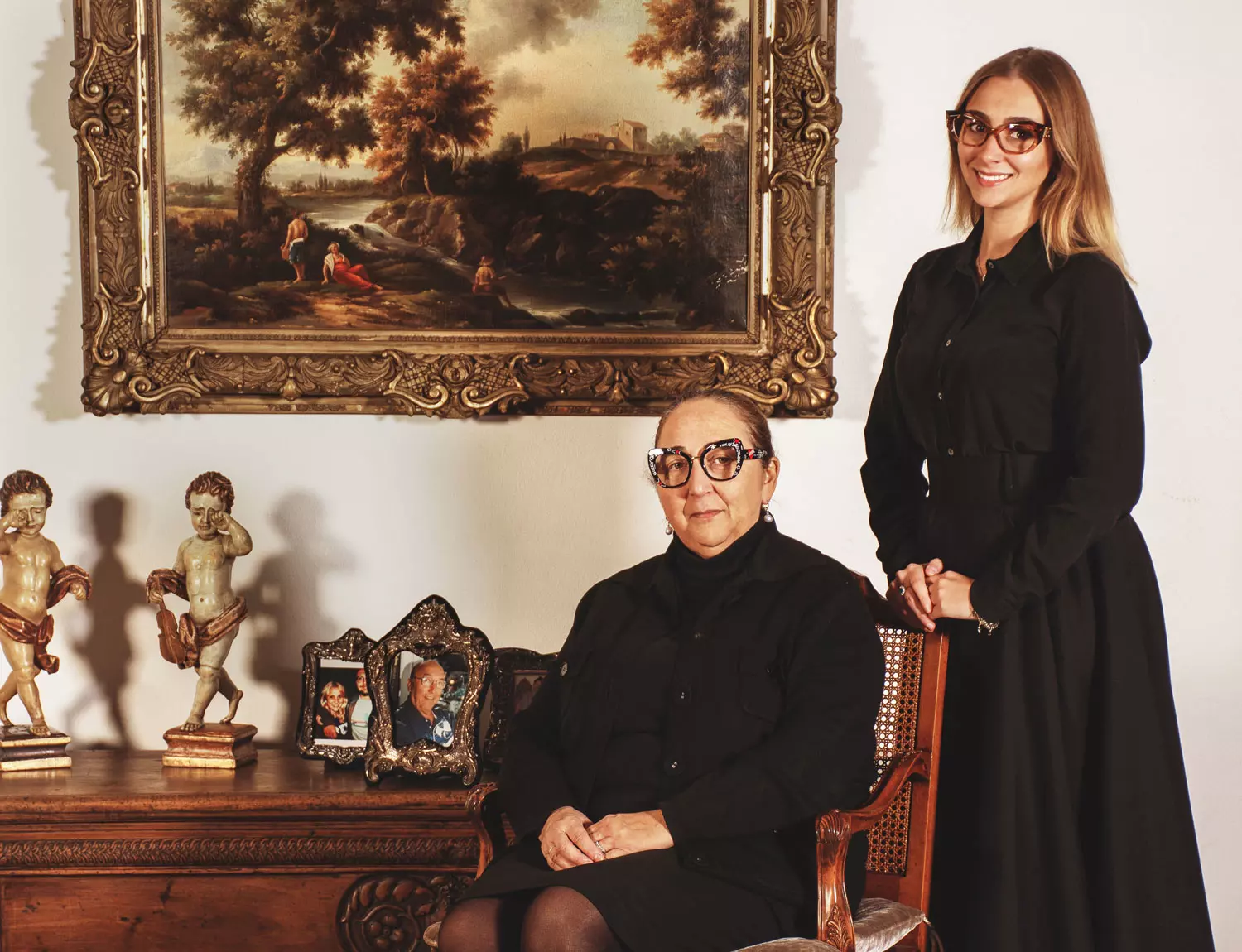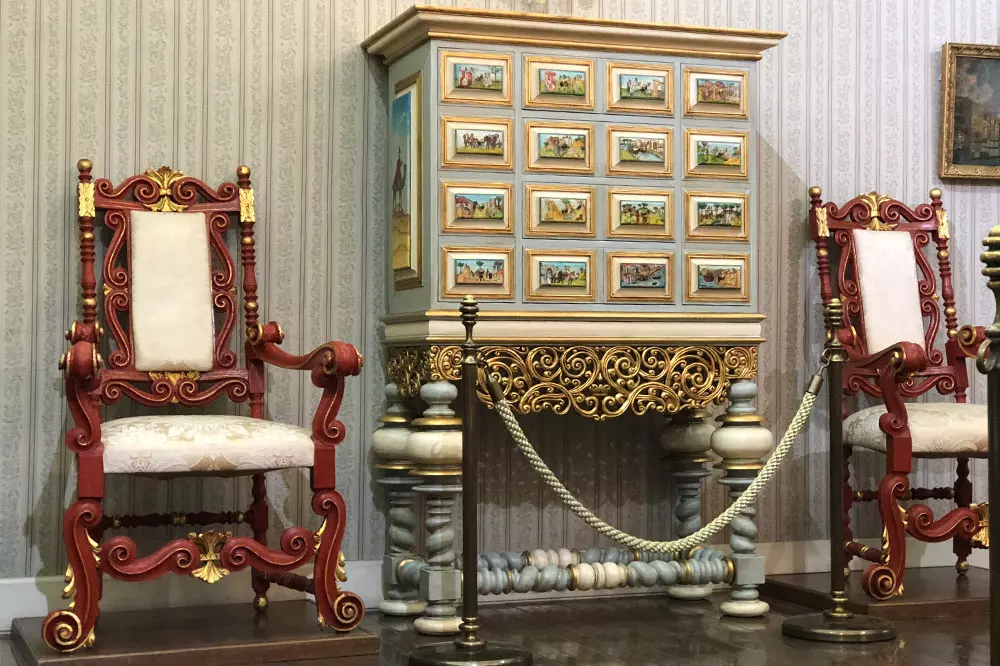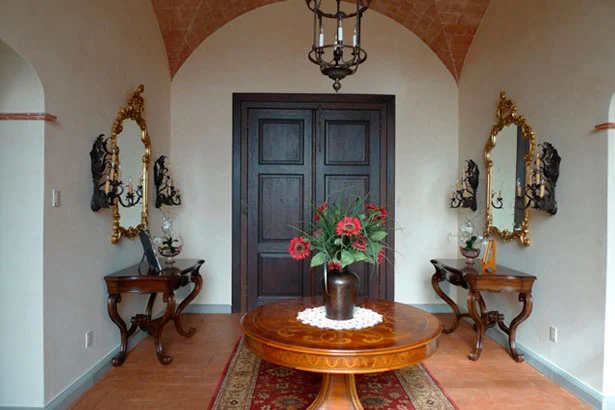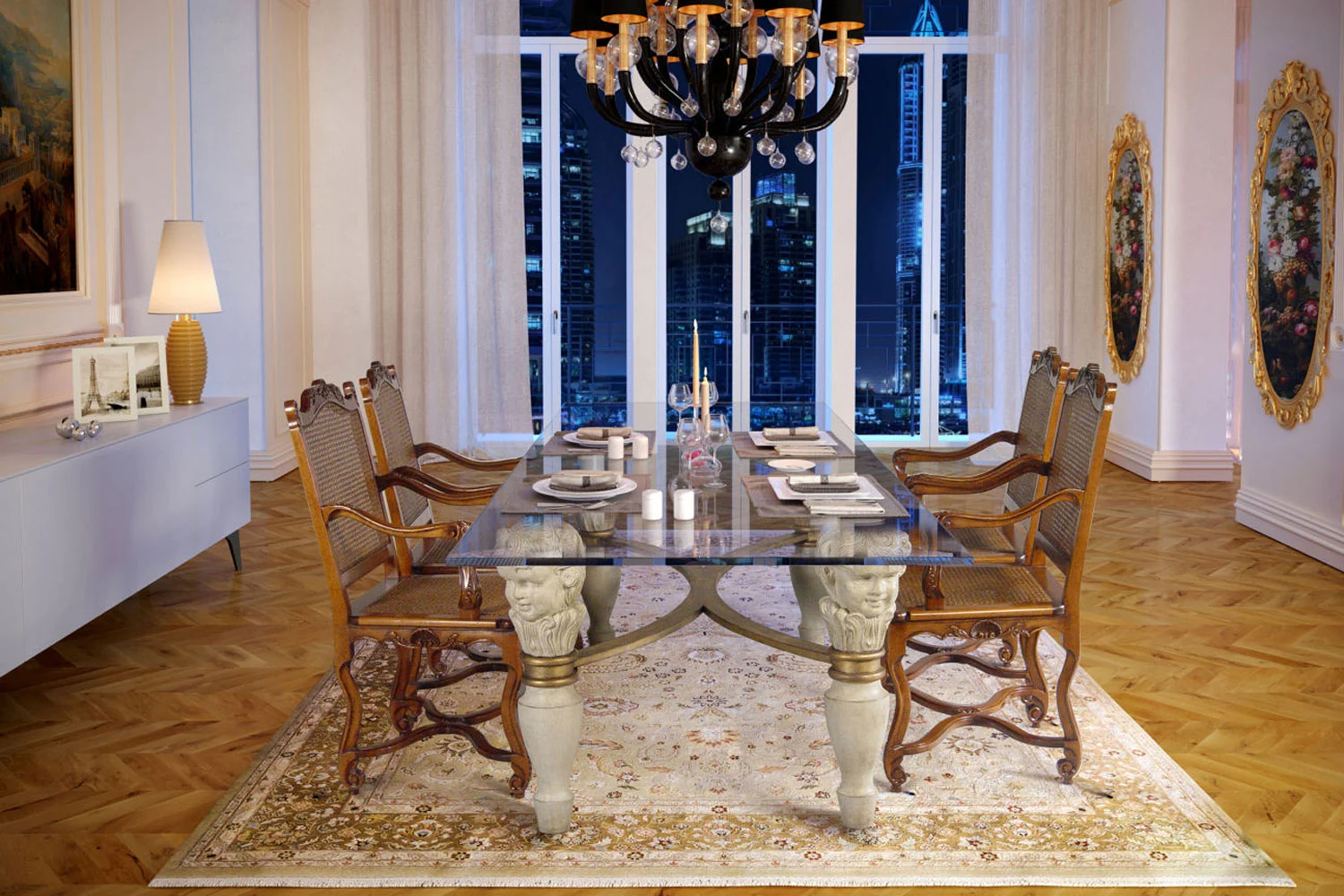The passion for the classic furniture and the fine furniture
In 1963 Marcello Sommacal founded what has been our company for sixty years.
We have always worked on a family basis and this has allowed us to follow each client from the beginning to the end. Today our company is headed by the founder’s daughter, Paola, who over time has managed to open the company to foreign markets and clients.

Thanks to our experience over the years, we are able to create custom designs ranging from furnishing to accessories. Through the generations we have carried on the culture, history and traditions of antique furniture. Many of our original antique furniture pieces with timeless character are collected in our warehouse.
The trust of our customers is one of the things we value most. Building a relationship with those who decide to rely on our professionalism is extremely important to us. Identifying what the customer is looking for and what their needs are in terms of space are essential elements that then help us make each purchase a tailored experience.

Customization
Those who choose a small family business reality like ours is because they are still looking for something exclusive and not the result of a standardized commercial line.
Thanks to our collaboration with different artisans, we are able to offer our customers different processes that make each piece of furniture unique and personalized.
More than just furniture
Thanks to a long and strong mutual collaboration we built over the years with many Italian artisans, we are also able to propose ourselves with furnishing complements.
From crystal chandeliers to Murano glass work; from steel or iron beating to the beautiful world of marble, we have been doing our work for sixty years, always focusing on the highest level of quality and excellence.
The experience and the ideas of the young
It is with some pride that our company is now approaching its third generation. Over the years, the furniture industry has changed a lot and faced times of severe crisis. Despite everything we have remained faithful to our niche products such as classic and antique furniture. This decision of ours has proven to be successful over time and has allowed us to develop our work in other countries around the World.
The furniture is ancient but the tools we use are in step with new generations and modern technologies.


Testimonials
R.R. – GB
“Thank you very much my dear Paola. The furniture is in and looks beautiful. Very much appreciated! Until the next time…”
Eric G. – Colorado – USA
“.. the book shelf door works great. We have gotten so many compliments on it and we always talk up your factory. I hope you guys always stay in business, your craftsmanship is out of this world. Thank you again. Respectfully.”
Renu R. – Greenford – U.K.
“Dear Paola, Thank you very much for the pain you took in making sure that all 3 pieces of furniture were perfect. The workmanship, quality and packing was all perfect and all matched very well in my home. I just received them this morning and am very happy. I am sure that I will be in touch very soon! Regards.”
Aisha A. M. – Abu Dhabi – U.A.E.
“Dear Paola, We received and assembled the furniture yesterday, it looked fabulous my family is very pleased with it and for the beautiful chair. The whole process was easy and very clear as well, my mum was glad for that. I would like to thank you for everything it was a quite pleasure and look forward to work again with you in the near future. Regards.”
Beth – USA
“Dear Paola, We had a wonderful barbeque two weeks ago, and everyone LOVED our furniture. We live in an old farmhouse and our furniture looks great. They especially liked the table and the wine cabinet. There is a large room with gothic ceilings and the furniture looks amazing in there. I have passed on your name and website address to them. I hope to see you in the future. I do miss Italy very much, but the people here have been nice and helpful. And the weather is only 18 degrees today with a small wind, but the sun is out. PS. You must come and visit us here. We have a big house with lots of bedrooms! Un bacio speciale.”
Willem & Margreet – France
“Dear Paola, Finally I can send you this e-mail. I apologize !!!!!!! but my internet was out of order! Thank you so much for the kit for small restoration. Jacques and his friend returned saturday evening around 8 o’ clock. They were very tired. But, guess what, the table is just ONE CENTIMETER to big for our elevator! Last week I’ve asked some workmen to bring our table via the stairs to our appartment at the second floor. THE TABLE IS REALLY WONDERFUL, YOU HAVE TO SEE OUR DINING-ROOM. And the chairs are so beautiful. We are very very happy with the table and the chairs delivered by you. We love it very much. If you would like to receive pictures of our dining-room we will send them to you. Warmest regards for you and Luca from.”
“Hello everyone, I am Emanuele S. from Trentino Alto Adige; I want to compliment Mrs. Paola of Mobilificio Sommacal for her professionalism and patience. Together with her collaborators she has created beautifully crafted furniture. I noticed the care and time she took to advise me and make me as happy as possible with the result. In fact, the furniture is really beautiful and fully reflects what I wanted, thanks to the advice of Paola and her joiners. In addition to that, the transportation was done extremely professionally, without the slightest hitch. As an Italian, I am happy that the Sommacal company brings prestige to our land by providing furniture of high aesthetic value and craftsmanship that carries forward a passion for the beautiful and the functional.”
“Mrs. Paola, we are back, we are tired but happy to have such a valuable piece of furniture in our house, but equally happy to have met exquisite people like you and to have appreciated a professional reality like yours… Thank you for everything and have a good weekend too.”
“Good morning Mr. Paola, we did not forget about you on the contrary! With the furniture we picked up from your company, our house has taken on an even more welcoming look. Many friends who came to visit us have expressed keen appreciation for the quality of the finishes. Surely ours will be a goodbye. On this occasion we wish you a peaceful Christmas.”
“Dear Ms. Paola, we would like to thank you for being able to fulfill our request to create the same style for the three purchased pieces (desk, sideboard, display case). The items were to our satisfaction and your kindness and professionalism will be recommended by us to our friends.”
“Mrs. Paola Good evening, I am Mr. Massimo from Sicily and I am writing this email to congratulate you on the purchase of the dresser in Italian 19 th century style from your company, I have known the furniture factory f.lli Sommacal on the internet and I saw that you produce furniture of a certain level and style, but I was very hesitant to buy via internet and for a considerable sum and without seeing in presence neither the dresser nor the craftsman more than 1000 km, but from the first phone call was born a relationship of trust on both sides that ended with the utmost satisfaction. The dresser that was delivered to me without a blemish is beautiful and exceeded all my expectations, achieving quality and savings. Thank you again and best regards.”
“Dear Mrs. Sommacal, as per phone call the courier arrived and delivered this morning. We are so happy with the corner cabinet! Hoping to visit you, we extend cordial greetings and sincere thanks.”
“Dear Mrs. Sommacal, as per phone call the courier arrived and delivered this morning. We are so happy with the corner cabinet! Hoping to visit you, we extend cordial greetings and sincere thanks.”
“Dear Mrs. Paola, I must confess that the tromp l’oeil armoire purchased through the internet, turns out to be qualitatively superior than how it appears on the site. A sincere thank you.”
Kirsti G. – Oslo – Norway
“Dear Paola, I’m sorry that I haven’t contacted you before, but my Internet connection disappeared last week because of work in the apartment. The armoire has not yet been assembled, but I have had a look at the top section and it looked really beautiful, just like I hoped it would be! Hopefully it will be put together on Friday and then placed at the entrance in my apartment. It was very well packed and it will probably be in good condition when we take all the parts out. I am so glad that I bought this armoire, I think I will like it very much. Sincerely.”
Dan W. – Burton – GB
“…the furniture arrived today and it is absolutely beautiful, my complements for the marvelous craftsmanship to produce such beautiful work! Many thanks.”
Tomoko – Hokkaido – Japan
“Dear Alberto, Mr. Asahara K. saw the new chairs today and He was very satisfied. Please forward our appreciation to their good works. Chairs are beautiful!! Many regards to Paola. Best regards.”
Hiromi – Japan
“Dear Mrs. Paola, Good afternoon!! Thank you for your kindly and thoroughgoing work craft, and careful packing. I have received the chest of drawers yesterday by the grace of you. This chest is superb, exquisite!! It shape and rich carving are truly beautiful. When the chest got through the customs, the staff of customs also said in chorus “What a beautiful furniture this is” “wonderful”. I treasure this chest and I will order more your furniture when I put up a larger house soon. I really appreciate your kindness!! THANK YOU VERY VERY MUCH!! See You Soon!! Sincerely.”
Sharmaine – USA
“Great to hear from mi amici!!!, I miss you all so much. Here are pictures of my new home and as you can see, I need some more of your furniture especially in the dining room. Everyone love the furniture you made for me. Friends forever. Thanks again and I love you guys very much.”
“…We hereby thank you for the very courteous treatment given to us, both from a professional and human point of view. At the same time, it is our pleasure to inform you that the furnishings you have made correspond perfectly to our wishes and harmoniously blend in with the style and architecture of our hotel and give it that touch of class befitting its category (5 stars). Therefore, it only remains for us to thank you for your effort in making our furnishings, which are superior either for the quality of the finish and the material used. In taking our leave, in the hope (melius certainty) that we can count on your company again, we extend our respectful greetings.”
“Ms. Paola, I received the desk and although the purchase was made via the internet, without viewing the product before shipping, I must thank you for the beauty and quality of this piece, well above my expectations. I will therefore recommend your company to all my acquaintances. I thank you once again. Best Regards.”
“Dearest Mrs. Paola, the realization of the custom-made furniture we requested is simply excellent!!!! You have made our dream come true! At your company we found professionalism, competence, excellent taste, spectacular products and excellent workmanship, but above all a lot of “human warmth”, kindness, helpfulness, simplicity, honesty. Your collaborators are also truly commendable people, both professionally and morally. What more can I say, for us this was a beginning of working relationship, but above all of friendship, which will surely find a continuation!!!! Thank you again sincerely!!!”
“Good evening Mrs. Paola, we wanted to thank you for the furniture you sent us. They are beautiful and look great in our new office! We will definitely look great! If you happen to be passing through our area, please stop by and visit us. We would be very pleased. Best regards.”
“Dearest Mrs. Paola finally we have the opportunity to express sincere gratitude for the work of your company, together with the seriousness and diligence you and your collaborators always demonstrated at every meeting. Your “piece” shows itself provoking the admiration of all friends and acquaintances, and shortly we hope to accompany some friends to you in search of prestigious furniture. Kind regards.”
“Good morning Mrs. Paola we have picked up the furniture we had ordered from you, and we have found that it is perfectly in accordance with our requirements. Thank you for your active cooperation in the drafting of the colors, which are just what we had actually asked for, and also in the quality of the wood used in the processing of the furniture itself. Best regards to all of you, with the hope of hearing from you in the future for any needs that may arise.”
“Dear Paola, I received the desk and chair. A marvel! A piece of furniture that exceeded all my expectations for the beauty of the artifact, the quality of the wood and the attention to detail. Anyone who sees the desk thinks it is an antique piece of furniture: it is a confirmation of the skill of the craftsmen and the professionalism of Ditta F.lli Sommacal. Thank you once again for your courtesy and valuable advice. I greet you with warm cordiality.”
“In reference to the order I placed, I am very satisfied with the product sold and with the packing and shipping service of the furniture. In particular, I appreciated the several phone calls received during the post order period and before delivery that kept me informed about the progress of the order.”
“Dear Mrs. Paola, I want to express my complete satisfaction for the seriousness, fairness and professionalism shown as well as the courtesy and helpfulness in the relations we had for the purchase – via the internet – (something unthinkable for me because I was afraid I could not trust) of the furniture that I had been looking for a long time and that I find really very beautiful and well finished. I must say that you are a rare pearl and if everything in Italy worked like your company we would surely all live much much better. I greet you with great esteem and sympathy.”
Our furniture
Every piece of furniture has its own story tied to the hands and the person who crafted it. All the craftsmanship is handmade by our artisans, making the final result even more precious.
When you visit our showroom, you’ll have the opportunity to discern the various types of wood, different styles, and diverse techniques.
Our passion for art and the antique has, over time, led us to have a modest collection of unique pieces at your disposal.